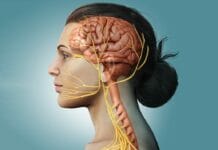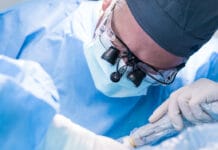Medical errors have been increasingly identified as a serious public health problem. This includes medical errors that occur in a dental setting. It’s been reported that preventable medical errors are the third leading cause of death in the United States.1
The definition of a medical error varies, but the Institute of Medicine (IOM) Committee on Quality of Health Care in the U.S. defines it as “the failure of a planned action to be completed as intended or the use of a wrong plan to achieve an aim.”1 Other experts simply characterize it as “deviations from the standard care process that may or may not result in patient injury.”1
Much attention was paid to this public health problem when a registered nurse, RaDonda Vaught, was charged criminally due to a medical error that led to the 2017 death of a patient, Charlene Murphy. She was later convicted of criminally negligent homicide and gross neglect of an impaired adult for inadvertently administering the wrong medication at a fatal dose.2 It was feared that RaDonda Vaught’s case could set a precedent for criminal action due to medical errors.
Some people may believe that criminalizing medical errors is a step in the right direction in the prevention of medical errors. For those who have suffered from or lost a loved one due to a preventable medical error, though it won’t undo the error, criminal liability might be the closest thing to justice and be seen as a way to help prevent it from happening to anyone else in the future by those liable.
However, the American Society of Anesthesiologists states in their official statement on the topic, “The criminalization of medical errors can lead to a dysfunctional safety culture, impaired psychological safety, increased clinician burnout, and consequently, diminished patient safety.”3 The overwhelming unease from health care associations was evident as many voiced their concern and put their support behind Vaught during her criminal trial.
In February 2024, Kentucky heard these concerns and recently became the first state to decriminalize medical errors. House Bill 159 states, “A health care provider providing health services shall be immune from criminal liability for any harm or damages alleged to arise from an act or omission relating to the provision of health services.”4
There are exceptions to this law, which are also noted in HB 159, “Nothing in this section limits any liability from gross negligence or wanton, willful, malicious, or intentional misconduct.”4
The Kentucky Nurses Association has expressed concerns regarding the criminalization of medical errors as the association believes that if medical errors are criminalized, health care providers are less likely to report them.5
Fear of consequences is the most reported barrier to reporting medical errors. Therefore, this bill is believed to provide some protection and reduce barriers to reporting medical errors.6
No matter your feelings regarding the criminalization of medical errors, the goal is to reduce the risk of medical errors occurring. Identifying the type of medical error, implementing ways to avoid them, and recognizing organizational failures are key to reducing medical errors.1
Active and Latent Errors
An active error, or an error of commission, involves the health care professional providing some aspect of patient care. An example of an active error would be extracting the wrong tooth.1,7
A latent error, or an error of omission, is an intrinsic failure or a failure to do something to or for the patient that should have been done. An example of a latent error would be failing to properly diagnose periodontal disease. Latent errors often persist for a long time without any adverse events. They are often viewed as “accidents waiting to happen.”1,7
Adverse Events
First and foremost, I think it is important to understand there are differences between adverse effects (also known as side effects) and adverse events. An adverse effect is a secondary unwanted effect that occurs due to drug therapy. Essentially, all adverse effects are adverse events.1,8
However, not all adverse events are an adverse effect.1,7 An adverse event is defined as “any event that affects a person’s health that occurs after they have received a treatment, whether that treatment is a medication, a surgery, a therapy or another intervention. The adverse event may or may not be caused by the intervention.”8
Adverse events are characterized into subgroups:1
- Negligent adverse event: Negligence is the failure of an average, qualified health care worker to meet the reasonably expected standard of care for a patient with similar circumstances. An example would be performing a prophylaxis instead of non-surgical periodontal therapy on a patient with diagnosed active periodontal disease.
- Near miss event: A medical error that could have resulted in patient harm but did not due to intervention or chance. A near miss is identical to an adverse event, except it results in no patient harm. An example would be when radiographs are put in the wrong chart, causing a misdiagnosis that is later corrected before treatment is completed.
- Potentially compensatable event: An adverse event that could lead to malpractice claims. An example would be the failure to diagnose an oral lesion as cancerous or the failure to refer a patient with a suspicious lesion to a specialist.
- Never event: Medical errors that should never happen. An example would be the extraction of the wrong tooth.
- Noxious episode: Diagnostic or treatment modalities that cause adverse events or complications. An example is sending a patient home with an infection that has invaded the sublingual space with a prescription for oral antibiotics rather than to the closest emergency department, resulting in systemic complications associated with the infection.
Organizational and Protocol Failures
Research indicates that the number of malpractice payments awarded is growing in dentistry while malpractice payments against non-dental health care professionals are dropping. This has been attributed to the fact that dentistry has stayed stagnant in regard to proper protocols and clinical practice guidelines for patient care.9
Unfortunately, there are very few agreed-upon guidelines in dentistry. Too often, personal experience outweighs evidence-based care. This has been an accepted practice since the inception of dentistry. This way of practicing increases the risk of medical errors. The American Dental Association (ADA) has taken notice and began creating clinical practice guidelines that should set the standard of care. However, the implementation of clinical practice guidelines has been slow to make its way to most dental practices.9,10
Clinical practice guidelines in dentistry have not been implemented swiftly because most dentists work in smaller private practices. While other areas of health care have larger organizations, like hospital systems, that have standardized structured approaches to ensure evidence-based practices are in place. The lack of structured approaches in private dental practices allows “experience-based dentistry” rather than standardizing protocols to practice “evidence-based dentistry.”9
If you are unfamiliar with the clinical practice guidelines established by the ADA, please take the time to review them.10 They can and will reduce the risk of medical errors, including many of the following errors.
Diagnostic Errors
Diagnostic errors are defined as “the failure to establish an accurate and timely explanation of a patient’s health problems or to communicate that explanation to the patient.” Diagnostic errors occur most often due to workload, time constraints, and the inability to confer easily with colleagues.1
A very relevant diagnostic error occurring in dental hygiene operatories is the inability to properly complete a comprehensive periodontal evaluation due to time constraints. Without a complete periodontal evaluation, there is a risk of a missed diagnosis of periodontal disease.
Medication Errors
Medication errors have several aspects, increasing the risk of an error occurring. Errors occur during prescribing, dispensing, and dosing. This could occur in a dental setting due to the lack of an updated medical history with a list of all medications the patient is taking. There is a risk of prescribing a medication that might be contraindicated for use with another medication the patient is already taking, or it could be contraindicated for the patient’s medical condition.1
Some practices dispense prophylactic antibiotics, often unnecessarily. Anytime medication is dispensed in-office, there is a risk of a medication error occurring. Dispensing the wrong medication due to similar names is the very thing that caused RaDonda Vaught to be criminally charged and convicted. Avoiding dispensing medication in-office when possible will reduce the risk of a medication error occurring.1
Device and Equipment Errors
Technology and devices are generally thought to improve patient care, improve efficiency in delivering care, and promote safety. However, mishandling, design flaws, and user errors in devices and technology are common causes of medical errors.1
For example, improper use of air polishers has been indicated in subcutaneous emphysema. This could be due to user error or someone operating devices they are not trained to use. Proper technique and verifying the manufacturer’s specifications can reduce the risk, yet not eliminate the risk of device and equipment errors. Always refer to the manufacturer’s instructions when using any device or equipment.11
Nosocomial Infections
Nosocomial infections are defined as “infection(s) acquired during the process of receiving health care that was not present during the time of admission.”12 Or, in the case of dentistry, that is not present at the start of treatment.
Recently, there have been outbreaks of Mycobacteria and Legionella following dental treatment. Therefore, infection control, including management and monitoring of dental unit waterlines, is necessary to reduce the risk of nosocomial infections that could occur in a dental setting.13
Additionally, hand hygiene is an important part of reducing the risk of nosocomial infections. Hand hygiene campaigns have shown to be effective in reducing the number of nosocomial infection rates for various bacterial and viral infections. Ensure you are aware of the proper protocols for hand hygiene, as alcohol-based hand sanitizers are not always the best option to reduce the risk of infection with certain viruses.1
Communication
Interprofessional communication and communication with patients is important in delivering optimal care and reducing medical errors. Some reasons for failed communication include environmental distractions, cultural differences, hierarchy issues, personality differences, language barriers, and socioeconomic barriers such as health literacy and education.1
Communication can also be compromised when written information is relied upon for the continuity of care. The use of nonstandard abbreviations can cause problems with patient care and increase the risk of medical errors. Therefore, ensure you are familiar with proper abbreviations or avoid using them when possible. Collaboration among team members creates a safe work environment and promotes patient care and safety greatly reducing the risk of medical errors.1
Lastly, be sure to listen to your patient’s concerns. Allow patients to voice questions and concerns about procedures and how the treatment will be delivered. Concerns must be respected and addressed regardless of personal feelings. In other words, it means less judgment and more curiosity.
Far too often, patient’s concerns are dismissed because the clinician cannot find a cause for the concern. This does not mean that the patient’s physical and emotional feelings are not real. Be respectful and reassure the patient that you will make every effort to help them. By dismissing the patient’s concerns, you could easily miss something that could lead to a medical error.1
Conclusion
Though many see the new bill enacted in Kentucky as a step in the right direction, it is important to understand this does not protect health care professionals from civil litigation. Though civil litigation is unlikely to result in jail time, it could result in the loss of the health care professional’s license and be quite costly.
It is imperative to continue to be diligent in efforts to avoid medical errors. Seeking out and attending relevant, evidence-based continuing education courses is a significant help in reducing the risk of contributing to a medical error. Maintaining liability insurance will also provide a level of protection if an error occurs.
Dental hygienists can and are implicated in lawsuits and have been found liable. Though we are all human and errors will inevitably occur, making every effort to prevent them will provide a safer work environment and ensure the protection of patients.
Before you leave, check out the Today’s RDH self-study CE courses. All courses are peer-reviewed and non-sponsored to focus solely on high-quality education. Click here now.
Listen to the Today’s RDH Dental Hygiene Podcast Below:
References
- Rodziewicz, T.L., Houseman, B., Vaqar, S., Hipskind, J.E. (2024, February 12). Medical Error Reduction and Prevention. StatPearls. https://www.ncbi.nlm.nih.gov/books/NBK499956/
- Kelman, B. (2022, May 13). No Prison Time for Tennessee Nurse Convicted of Fatal Drug Error. KFF Health News and NPR. https://kffhealthnews.org/news/article/radonda-vaught-nurse-homicide-sentencing-probation-drug-error/
- Committee on Patient Safety and Education. (2023, October 18). Statement on Criminalization of Medical Errors. American Society of Anesthesiologists. https://www.asahq.org/standards-and-practice-parameters/statement-on-criminalization-of-medical-errors
- An ACT Relating to Immunity From Criminal Liability for Health Care Providers, H.B. 159, 2024 Regular Session. (2024). https://apps.legislature.ky.gov/recorddocuments/bill/24RS/hb159/bill.pdf
- Ladd, S., (2024, February 8). Bill Would Give Health Care Providers Criminal Immunity for Medical Mistakes. Kentucky Lantern. https://kentuckylantern.com/2024/02/08/bill-would-give-health-care-providers-criminal-immunity-against-medical-mistakes/
- Aljabari, S., Kadhim, Z. Common Barriers to Reporting Medical Errors. ScientificWorldJournal. 2021; 2021: 6494889. https://www.ncbi.nlm.nih.gov/pmc/articles/PMC8211515/
- Gluyas, H., & Morrison, P. (2013).What Do We Mean By Patient Safety? In Patient Safety: An Essential Guide (pp. 9-26). Palgrave Macmillan.
- Adverse Event vs. Side Effect. (n.d.). Association of Health Care Journalists. https://healthjournalism.org/glossary-terms/adverse-event-vs-side-effect/
- Nalliah, R.P. Trends in US Malpractice Payments in Dentistry Compared to Other Health Professions – Dentistry Payments Increase, Others Fall. Br Dent J. 2017; 222(1): 36-40. https://www.nature.com/articles/sj.bdj.2017.34
- Clinical Practice Guidelines and Dental Evidence. (n.d.). American Dental Association. https://www.ada.org/en/resources/research/science-and-research-institute/evidence-based-dental-research
- Alonso, V., García-Caballero, L., Couto, I., et al. Subcutaneous Emphysema Related to Air-Powder Tooth Polishing: A Report of Three Cases. Aust Dent J. 2017; 62(4): 510-515. https://onlinelibrary.wiley.com/doi/10.1111/adj.12537
- Sikora, A., Zahra, F. (2023, April 27). Nosocomial Infections. StatPearls. https://www.ncbi.nlm.nih.gov/books/NBK559312/
- Bet Practices for Dental Unit Water Quality. (2024, May 15). Centers for Disease Control and Prevention. https://www.cdc.gov/dental-infection-control/hcp/dental-ipc-faqs/best-practices-dental-unit-water-quality.html











